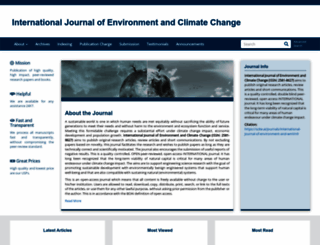International Journal of Environment and Climate Change
Page Load Speed
26.9 sec in total
First Response
2 sec
Resources Loaded
24.7 sec
Page Rendered
280 ms

About Website
Click here to check amazing Journal Ijecc content. Otherwise, check out these important facts you probably never knew about journalijecc.com
International Journal of Environment and Climate Change aims to publish original research articles, review articles and short communications. This is a quality controlled, double blind peer-reviewed, ...
Visit journalijecc.comKey Findings
We analyzed Journalijecc.com page load time and found that the first response time was 2 sec and then it took 24.9 sec to load all DOM resources and completely render a web page. This is a poor result, as 95% of websites can load faster. Unfortunately, there was 1 request timeout, which can generally increase the web page load time, as the browser stays idle while waiting for website response.